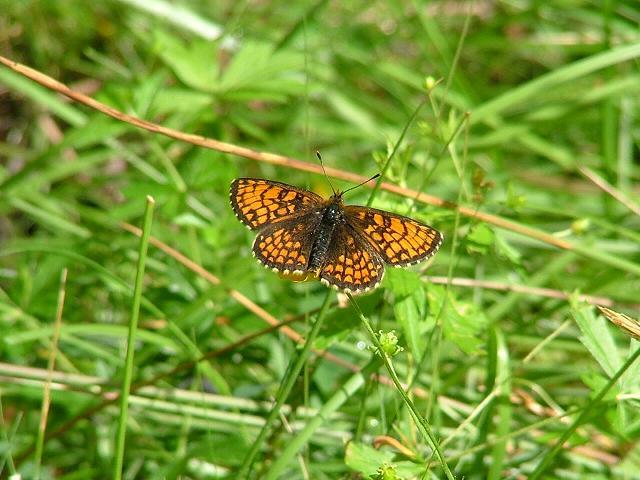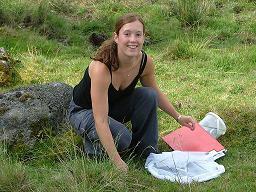Importance of the surrounding landscape on butterfly communities in Östergötland, Sweden
By Lena Ask
Abstract
In this study the butterfly fauna at 60 selected pastures was studied in a coniferous dominated landscape. The aim was to investigate how the butterfly communities were affected by the surrounding landscape. For each study site, the amount of meadows and pastures in the landscape within radii of 500, 2000 and 5000 m were studied. Nine local habitat factors were also recorded. Only the amount of semi-natural pastures at the 5000 m scale could explain a significant part of the variation in butterfly composition but there was no clear relationship between the amount of semi-natural pastures and butterfly diversity. Instead this study showed that the local habitat quality was very important for the butterfly composition at single sites. Flower abundance, sward height and herb composition were the most important local factors. In this study, also rather isolated patches had high butterfly diversity, in contrary to the expectations. It may be explained by the fact the forest provides a diverse matrix with several features suitable for butterflies and a more recent history in decline of semi-natural pastures. In addition, the coniferous landscape generally had more butterfly species per site when compared with a similar study in agricultural landscape. The results have implications in conservation management. For the butterfly fauna in a matrix of coniferous forest, it is efficient to continue to manage even more isolated pastures, but it may still be of importance to take the whole landscape in consideration for long-term persistence of a rich fauna.
Keywords: Conservation, butterfly diversity, landscape effects, metapopulation, semi-natural pastures

Contact:

Lena Ask, Applied Biology International Mastersprogram, Linköping University
e-mail: lenas470@student.liu.se
Responsible for this page:
Director of undergraduate studies Biology
Last updated:
06/14/05
